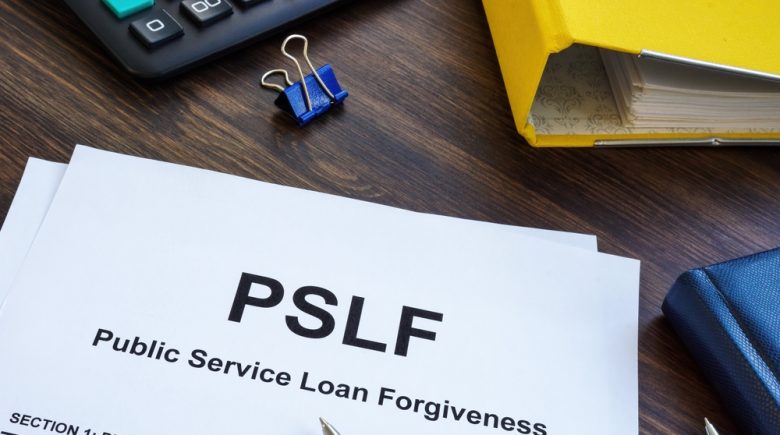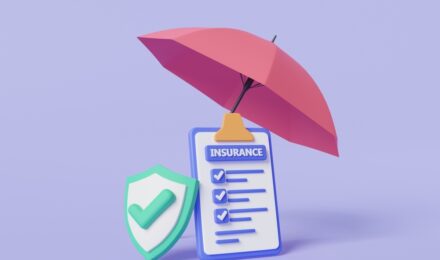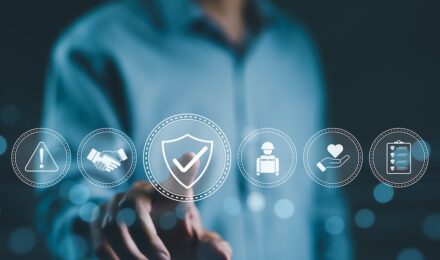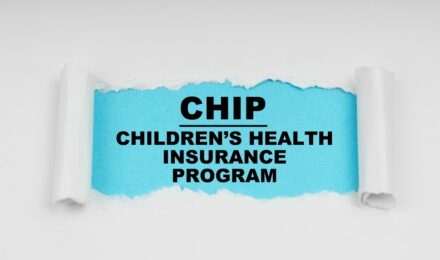Contents
Since its creation in 2007, the Public Service Loan Forgiveness (PSLF) program has been one of the most discussed—and debated—elements of federal student aid. Designed to reward service in government and nonprofit sectors, PSLF promises complete federal loan forgiveness after 120 qualifying payments (about ten years) for borrowers working in eligible jobs.
Over the years, the program has helped teachers, nurses, military personnel, and nonprofit workers manage the burden of student debt while pursuing lower-paying but socially valuable careers. Yet its complexity, high denial rates, and shifting rules have also drawn criticism. As of 2025, new budget legislation and ongoing policy debates are reshaping the future of PSLF. For current and prospective borrowers, the central question remains: is PSLF still worth pursuing?
How PSLF Works
To qualify for forgiveness, borrowers must:
- Work full-time for a qualifying employer, generally a government agency or nonprofit organization.
- Make 120 on-time payments under a qualifying repayment plan, typically an income-driven repayment (IDR) plan.
- Hold Direct Loans (or consolidate other federal loans into the Direct Loan program).
At the end of ten years of qualifying payments, any remaining balance is forgiven, tax-free.
Recent Improvements
In recent years, the Department of Education has made significant efforts to improve PSLF’s performance. Temporary waivers and the introduction of the IDR Account Adjustment allowed many borrowers to retroactively count payments that had previously been excluded. These measures substantially increased approval rates, turning PSLF into a more realistic path for forgiveness.
The rollout of the SAVE Plan also made PSLF more accessible by lowering monthly payments, ensuring that more borrowers could remain in public service while managing reduced cash flow. These changes signaled a strong commitment to strengthening the program.
Challenges in 2025
Despite improvements, PSLF now faces renewed scrutiny. Critics in Congress argue that the program is too costly, disproportionately benefits borrowers with graduate degrees, and does not adequately incentivize cost control in higher education. The 2025 budget law included provisions to reassess eligibility and reduce long-term federal expenditures.
While the exact scope of changes varies across proposals, the main areas under debate include:
- Narrowing the definition of qualifying employment to exclude some nonprofit organizations.
- Extending the required repayment period beyond 120 payments.
- Restricting eligibility for borrowers with high loan balances, particularly in graduate and professional programs.
If enacted, these reforms could significantly alter PSLF’s value proposition for future participants.
Who Still Benefits Most
For borrowers already in public service careers, PSLF continues to offer meaningful benefits. Teachers, nurses, first responders, and public defenders can realistically expect substantial forgiveness if they remain in qualifying employment and complete the required payments. The tax-free nature of forgiveness further strengthens its appeal.
However, the calculus is more complicated for prospective students considering high-cost graduate programs. If PSLF eligibility narrows or repayment timelines lengthen, the ability to rely on forgiveness as a financial safety net diminishes. Students pursuing law, medicine, or graduate public policy degrees must weigh the risk of policy changes against the potential rewards.
Risks of Policy Uncertainty
The greatest challenge with PSLF is uncertainty. Because forgiveness occurs only after a decade of service, participants face the risk that future legislative changes could alter the rules midstream. Although existing borrowers are often “grandfathered” under prior rules, this is not guaranteed. The volatility of student aid policy in recent years has made some borrowers wary of relying too heavily on PSLF as part of their financial planning.
Preparing for the Future
For those currently enrolled or considering PSLF, several steps can help manage risk:
- Document everything: Keep detailed employment certifications, payment histories, and correspondence with servicers. This reduces the chance of disputes about eligibility later.
- Stay updated: Monitor Department of Education announcements and legislative debates, as rules can shift quickly.
- Consider parallel strategies: Save for retirement, build emergency funds, and evaluate whether repayment remains manageable even if forgiveness is delayed or reduced.
These strategies can help borrowers protect themselves while still pursuing the benefits of PSLF.
The Bigger Picture
PSLF raises broader policy questions about the purpose of student aid. Supporters argue that it is essential for attracting talent into public service jobs that pay less than private-sector alternatives. Critics contend that forgiveness programs distort incentives and place an undue financial burden on taxpayers.
As Congress weighs these perspectives, the future of PSLF will likely continue to evolve. What remains clear is that the program reflects a national decision to value public service—but the exact shape of that commitment is subject to political and fiscal constraints.
Conclusion
Public Service Loan Forgiveness remains a vital tool for many borrowers, particularly those already in qualifying careers. Recent reforms have made the program more accessible and reliable than in the past. Yet in 2025, political debates and budget pressures raise new questions about its long-term stability.
For borrowers, PSLF can still be worthwhile, but it should not be the sole foundation of a repayment strategy. By staying informed, documenting progress, and preparing for possible changes, public service workers can maximize their chances of benefiting from forgiveness while maintaining financial resilience.
References
- Federal Student Aid – Public Service Loan Forgiveness
- The College Investor – PSLF Updates and Analysis
- Brookings Institution – The Future of PSLF
Contents
Since its creation in 2007, the Public Service Loan Forgiveness (PSLF) program has been one of the most discussed—and debated—elements of federal student aid. Designed to reward service in government and nonprofit sectors, PSLF promises complete federal loan forgiveness after 120 qualifying payments (about ten years) for borrowers working in eligible jobs.
Over the years, the program has helped teachers, nurses, military personnel, and nonprofit workers manage the burden of student debt while pursuing lower-paying but socially valuable careers. Yet its complexity, high denial rates, and shifting rules have also drawn criticism. As of 2025, new budget legislation and ongoing policy debates are reshaping the future of PSLF. For current and prospective borrowers, the central question remains: is PSLF still worth pursuing?
How PSLF Works
To qualify for forgiveness, borrowers must:
- Work full-time for a qualifying employer, generally a government agency or nonprofit organization.
- Make 120 on-time payments under a qualifying repayment plan, typically an income-driven repayment (IDR) plan.
- Hold Direct Loans (or consolidate other federal loans into the Direct Loan program).
At the end of ten years of qualifying payments, any remaining balance is forgiven, tax-free.
Recent Improvements
In recent years, the Department of Education has made significant efforts to improve PSLF’s performance. Temporary waivers and the introduction of the IDR Account Adjustment allowed many borrowers to retroactively count payments that had previously been excluded. These measures substantially increased approval rates, turning PSLF into a more realistic path for forgiveness.
The rollout of the SAVE Plan also made PSLF more accessible by lowering monthly payments, ensuring that more borrowers could remain in public service while managing reduced cash flow. These changes signaled a strong commitment to strengthening the program.
Challenges in 2025
Despite improvements, PSLF now faces renewed scrutiny. Critics in Congress argue that the program is too costly, disproportionately benefits borrowers with graduate degrees, and does not adequately incentivize cost control in higher education. The 2025 budget law included provisions to reassess eligibility and reduce long-term federal expenditures.
While the exact scope of changes varies across proposals, the main areas under debate include:
- Narrowing the definition of qualifying employment to exclude some nonprofit organizations.
- Extending the required repayment period beyond 120 payments.
- Restricting eligibility for borrowers with high loan balances, particularly in graduate and professional programs.
If enacted, these reforms could significantly alter PSLF’s value proposition for future participants.
Who Still Benefits Most
For borrowers already in public service careers, PSLF continues to offer meaningful benefits. Teachers, nurses, first responders, and public defenders can realistically expect substantial forgiveness if they remain in qualifying employment and complete the required payments. The tax-free nature of forgiveness further strengthens its appeal.
However, the calculus is more complicated for prospective students considering high-cost graduate programs. If PSLF eligibility narrows or repayment timelines lengthen, the ability to rely on forgiveness as a financial safety net diminishes. Students pursuing law, medicine, or graduate public policy degrees must weigh the risk of policy changes against the potential rewards.
Risks of Policy Uncertainty
The greatest challenge with PSLF is uncertainty. Because forgiveness occurs only after a decade of service, participants face the risk that future legislative changes could alter the rules midstream. Although existing borrowers are often “grandfathered” under prior rules, this is not guaranteed. The volatility of student aid policy in recent years has made some borrowers wary of relying too heavily on PSLF as part of their financial planning.
Preparing for the Future
For those currently enrolled or considering PSLF, several steps can help manage risk:
- Document everything: Keep detailed employment certifications, payment histories, and correspondence with servicers. This reduces the chance of disputes about eligibility later.
- Stay updated: Monitor Department of Education announcements and legislative debates, as rules can shift quickly.
- Consider parallel strategies: Save for retirement, build emergency funds, and evaluate whether repayment remains manageable even if forgiveness is delayed or reduced.
These strategies can help borrowers protect themselves while still pursuing the benefits of PSLF.
The Bigger Picture
PSLF raises broader policy questions about the purpose of student aid. Supporters argue that it is essential for attracting talent into public service jobs that pay less than private-sector alternatives. Critics contend that forgiveness programs distort incentives and place an undue financial burden on taxpayers.
As Congress weighs these perspectives, the future of PSLF will likely continue to evolve. What remains clear is that the program reflects a national decision to value public service—but the exact shape of that commitment is subject to political and fiscal constraints.
Conclusion
Public Service Loan Forgiveness remains a vital tool for many borrowers, particularly those already in qualifying careers. Recent reforms have made the program more accessible and reliable than in the past. Yet in 2025, political debates and budget pressures raise new questions about its long-term stability.
For borrowers, PSLF can still be worthwhile, but it should not be the sole foundation of a repayment strategy. By staying informed, documenting progress, and preparing for possible changes, public service workers can maximize their chances of benefiting from forgiveness while maintaining financial resilience.






